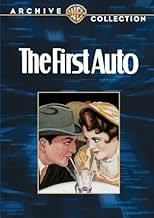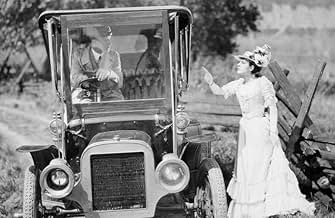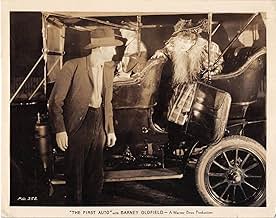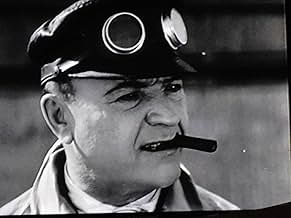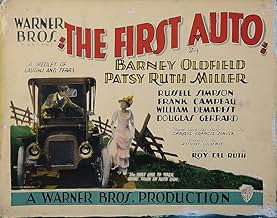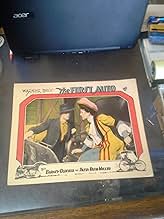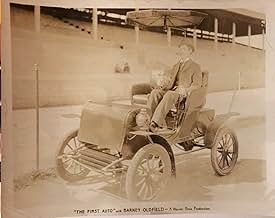अपनी भाषा में प्लॉट जोड़ेंHank owns horses, stables horses and races horses. He favorite horse always wins and he is prosperous and well known. His son (Bob), however, dreams only of the future of the horseless carri... सभी पढ़ेंHank owns horses, stables horses and races horses. He favorite horse always wins and he is prosperous and well known. His son (Bob), however, dreams only of the future of the horseless carriage and not of the horse. This causes problems between Hank and Bob. As the people in the ... सभी पढ़ेंHank owns horses, stables horses and races horses. He favorite horse always wins and he is prosperous and well known. His son (Bob), however, dreams only of the future of the horseless carriage and not of the horse. This causes problems between Hank and Bob. As the people in the town convert from horses to autos, Hank detests those who switch - so he loses his friends... सभी पढ़ें
- निर्देशक
- लेखक
- स्टार
- Bob Armstrong
- (as Chas. E. Mack)
- Joe Saunders
- (बिना क्रेडिट के)
- Livery Handler at Auction
- (बिना क्रेडिट के)
- Townsperson Who Laughs Heartily
- (बिना क्रेडिट के)
- Elmer Hays
- (बिना क्रेडिट के)
- Boy
- (बिना क्रेडिट के)
- Young Woman
- (बिना क्रेडिट के)
- Barber
- (बिना क्रेडिट के)
- Mrs. Stebbins
- (बिना क्रेडिट के)
फ़ीचर्ड समीक्षाएं
Besides having a more complex soundtrack, "The First Auto" also serves as an historical record showcasing some of the very earliest horseless carriages under their own power. The movie's plot describes a successful race horse owner, Hank Armstrong (Russell Simpson), disparaging the advanced technology of automobiles. He wins a bet against one of the car's owners, proving his contention that cars will never replace horses in speed or in power. By the early 1900s, however, Hank's son, Bob Armstrong (Charles Emmett Mack), and all his pals have gasoline engine fever, and are foaming at the mouth to get their hands on them. Bob becomes a race car driver, and an exciting conclusion makes no doubt that automobiles are here to stay.
Not that they were any safer than horse carriages. In real life, actors appearing in "The First Auto" were killed in two separate accidents. Extra and script girl Helen Howard died when her and two other cast members were in a car that collided with another vehicle in downtown Los Angeles. The driver, William Demarest, who played the village funnyman and was Uncle Charlie in 'My Three Sons,' suffered cuts and bruises in the overturned car while extra Loretta Rush cracked her skull. After filming was over, Charles Emmett Mack died in an auto accident. His part as Bob was a major role for Mack, killed at the age of 26.
The best silent movies used a minimum of inter-titles, but "The First Auto" was overburdened with them -- oh, granted, not as overburdened as some other movies, but still there were too many.
There are, though, several reasons to watch this movie, and only a few to cause head-scratching and puzzlement.
First, seeing the original Barney Oldfield, as himself, is probably reason enough to watch "The First Auto." Oldfield was a magic name in the early years of both autos and cinema, and was an automotive hero a long time before there was such a thing as NASCAR.
Second, seeing Russell Simpson as the lead is a treat. He was an excellent actor, but was nearly always relegated to a "with" role. Even if in top-line films, he was put into secondary positions, and obviously, just judging from "The First Auto," he was fully qualified to get top billing.
Finally, one has to see it to believe it: The "special effects" when a race car supposedly catches fire ... well, "primitive" doesn't begin to describe it.
Perhaps we need to give an "A" for effort; and to note how far we have come in effects is one very good reason to watch this.
One major player was killed before filming was complete, but the result is no "Plan 9 from Outer Space": "The First Auto" is seamless in how that actor's death is handled.
This really is a movie to watch, for the good cast (also look for the adorable Patsy Ruth Miller), for a good story, and to see how the world of movie-making has changed.
This is a patchwork of a film -- part comedy (including some old vaudeville routines. William Demerest and his clown companion are present for no other reason except comic relief. In vaudeville, the clowns in front of the curtain were there to mask the noise and movement of scenery and costume changes taking place on the stage behind the curtain.) Such clowning was obviously not necessary for the movies, but it's still there -- and we get to see what people were laughing at before stand-up monologue comedy was the only game in town.
The film is part melodrama as we see how a horse in the late 1890's could be the friend and companion of the pre-industrial era, and how the death of a man's horse could bring a man to tears. "A horse is loyal. A horse remembers! A horse knows what gratitude is!" -- words spoken by the father/livery owner who is then called a "Brute" (an animal) by his son.
With it's pre-talkie talking-and-scored soundtrack, it sometimes plays like a rough experiment in early film sound technologies (which exactly parallels the story of the first automobiles -- and how quickly they displaced the horse-centered life.) Within 3 years, silent pictures were as gone from the landscape as horse-drawn buggies. The equally experimental "special effects" fire in the engine of a moving race car isn't exactly the parting of the Red Sea -- but we still get the idea.
It also has the air of a headliner news-reel -- when surprise! Barney Oldfield, playing himself, races around the horse track so that all of America (at least those who went to the movies) could see him do what he was famous for -- speed racing!
At it's heart, however, this is a story. It is about family and about learning what matters (sometimes called family values), and of generations -- a father with both feet firmly planted in the pre-automobile age, and his son who is racing after the biggest technology of the time. They loose each other, almost loose everything else, and then find each other and move into the automobile age together -- where the father opens a car dealership and goes to the car races while the son spends his days at the horse shows. -- and "gosh, what's the world coming to next?" as a bi-plane soars overhead.
This is not a "great" movie -- but it is great fun, and a great window back both to 1927 and it's time of plenty before the stock market crashed us into the Depression; and to the 1927 recollection of 1896, when the lights of technology were just beginning to turn on. It is a wonderful piece of film history, now preserved for my great- and great-great grandchildren. --Thanks to all those doing film preservation -- we love it.
क्या आपको पता है
- ट्रिवियाCharles Emmett Mack died in a car crash on his way to the studio four months prior to the release of this completed film, though he was not on his way to shoot a car chase to this film as has been often reported. Because of this unfortunate occurrence, when the film eventually was released, cast credits were rearranged, placing Barney Oldfield in top position, even though he only had a relatively short appearance in the film, and Mack was quietly placed in the bottom position, even though he was the star. [The credits for the version shown on TCM lists "Chas. E. Mack" third from the bottom with Oldfield listed last.]
- गूफ़Mr. Stebbins receives a letter from his insurance company canceling his policy dated 1897, but his car is a 1906 model.
- भाव
Opening Title Card: Once upon a time, a horse was a horse... and was loved as such. This was even before Dan Patch started breaking records, or the Vanderbilt cup races had come to displace the county fair. The latest thing then was a bicycle built for two... Bryan hadn't been heard of... and a nickel was still respected -...
- क्रेज़ी क्रेडिट"A Romance Of The Last Horse And The First Horseless Carriage"
- कनेक्शनEdited into Gadgets Galore (1955)
- साउंडट्रैकIn My Merry Oldsmobile
(1905) (uncredited)
Music by Gus Edwards
In the score during the opening credits, at the end and as background music
टॉप पसंद
विवरण
- चलने की अवधि
- 1 घं 15 मि(75 min)
- रंग
- ध्वनि मिश्रण
- पक्ष अनुपात
- 1.33 : 1

